|
28. Pieris napi (Linnaeus, 1758) / Green-veined white / Pieridae – Pierinae
NL: geaderd witje, klein geaderd witje / D: Rapsweiβling, Grünader-Weiβling / F: piéride du navet
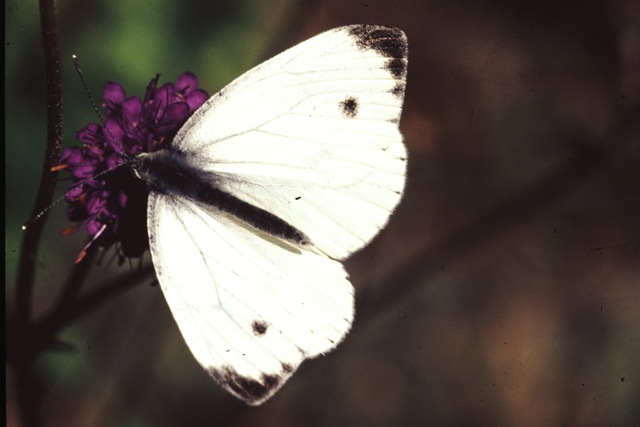 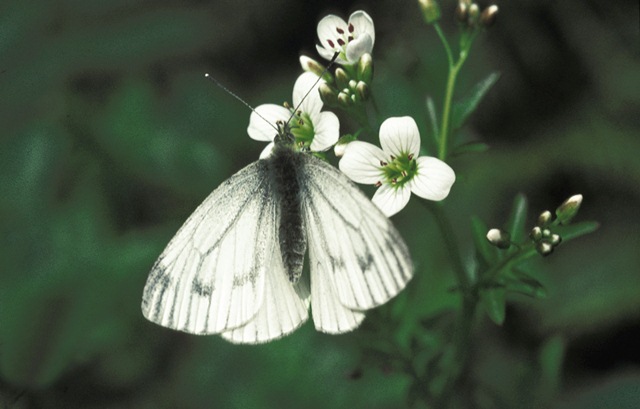 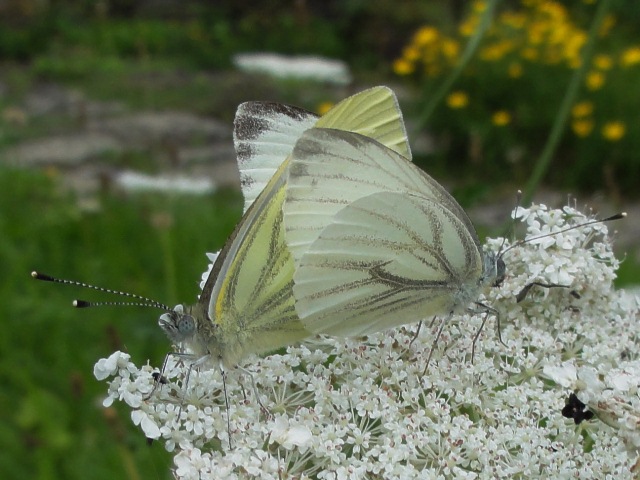
Photographs: Frits Bink ©, Frits Bink ©, Rosita Moenen ©.
Medium sized, wing length 22 (20-24) mm. It occurs throughout the Benelux and is one of the most common species in the countryside and known as a pest on cabbage in gardens. The larvae are very similar to those of P. rapae. However, ecologically the two species are different in their choice of habitat, Pieris napi occurring more frequently in marshes and wet meadows along brooks, whereas P. rapae is more common in open landscapes with dry arable fields.
Butterfly is on the wing from mid-April until end-September and peaks end-May and end-July, in Flanders end-August. It occurs in maritime and continental climates, amplitude 4 to 18. The required heat sum is 300°d and the tolerated one 2000°d, this corresponds with climate windows 18 and 38 weeks.
The taxonomic status of Pieris napi is complicated, there are several subspecies (or species?), which look quite different. In north Scandinavia and in the high mountains races or species with dark brown females are found and these intergrade with the lowland white form. The species is also seasonally dimorphic.
Ecological characteristics
Behaviour over time
Overwintering: pupa attached to trunk, stalk, stone or wall, fully exposed.
Reproduction: oviposition starts after 3-4 days when the body contains 46 (24-69) eggs. Estimated potential 6.3 times as much.
Larval feeding periods: very short, 2-3 weeks in the period from May until October.
Generations: one, two or three, depending on the habitat.
Spreading of risk: facultative diapause in the pupal stage and spread in hatching.
Life cycle: egg 5 (3-7) days; larva 17 (11-22) days; pupa 11 (7-13) days or 21-47 weeks when overwintering.
Life span of adult: short, 2 weeks.
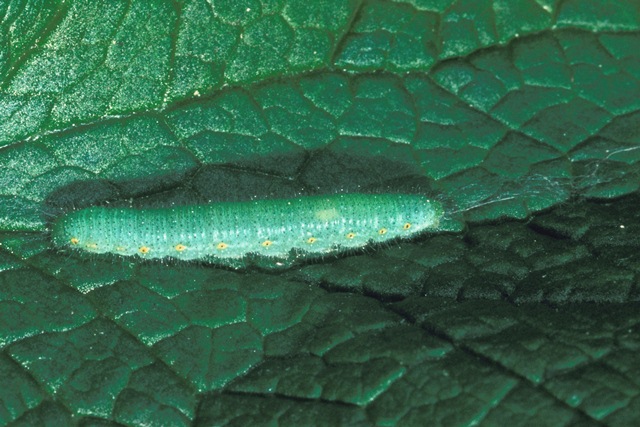 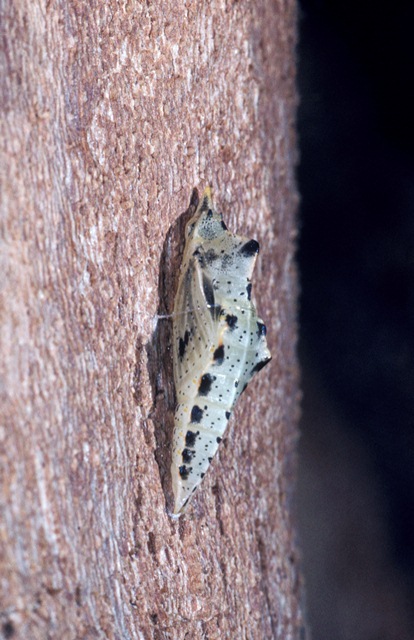
Photographs: Frits Bink ©.
Behaviour in space
From stay-at-home to migrant: nomad, spatial requirement considerable.
Finding a mate: male patrols and inspects every white butterfly.
Orientation in the landscape: somewhat on gradient structures.
Oviposition: single egg on mature leave, on a big host-plant sometime 2-3 together.
Defence
Threats from other organisms: the larva is fairly well camouflaged, the adult is ignored by birds.
Threats from the environment: adults intolerant of heat and drought, therefore it prefers more humid and cooler places.
Feeding habits
Adult: nectar of all kinds of flowers, drinking water from wet soil on hot days, sometime in company.
Larva: usually feeds on mature leaves (on Alliaria petiolata it can be present with Anthocharis cardamines, exemplifying a difference in behaviour: P. napi feeds only on leaves whereas the latter feeds on the fruits).
Larval foodplants
Plant species: Brassicaceae, e.g. Alliaria petiolata, Arabis alpina, A. glabra, A. hirsuta, Barberea vulgaris, Brassica napus, B. nigra, B. oleracea, B. rapa, Cardamine hirsuta, C. pratensis, Lunaria annua, Nasturtium officinale, Rorippa amphibia, R. sylvestris, Sinapis arvenis, S. alba, Sisymbrium officiale. Thlaspi alpestre.
Tropaeolaceae, Tropaeolum majus.
Journal
Breeding experiment based on specimen from Amerongen, Netherlands:
26 August 1985: fresh female captured.
29 August: 69 eggs laid.
3 September: first eggs hatched.
8 September: larvae in moult L1-2.
12 September: larvae in L4.
21 September: first larvae pupated.
1 October: first adult appeared, male.
3 October: six females and eight males hatched.
5 October: first pair seen in copula.
6 October: first egg was laid.
14 October: eggs hatched.
Table 28-1. Results of dissections

Table 28-1a. Oviposition sequence

Table 28-2. Collection and observation localities
B, Theux 50° 33’ 20”N – 5° 49’ 50”E; 30 April 1983, 17 June 1983.
D, Blankenheim 50° 22’ 40”N – 6° 41’ 05”E; 20 June 1983.
D, Lorch 300m, 50° 02’ 05”N – 7° 47’ 56”E; 31 July 1985.
EST, Kuresoo 58° 28’ 00”N – 25° 11’ 59”E; 8 July 1999.
EST, Endla Nature Reserve 58° 52 34”N – 26° 16’21”E; 10 July 1999.
EST, Pööravere 58° 40’ 25”N – 24° 36’ 50”E; 16 July 1999.
F, Brittany, Telgruc-sur- Mer 48° 12’ 25”N – 4° 22’ 25”W; 29 September 2004.
F, Cap Blanc-Nez 30 m, 50° 55’ 37”N – 1° 42’45”E; 1 September 1999, 10 June 2000.
F, la Grande Brière 47° 23’ 42”N – 2° 17’ 22”W; 24 September 2004.
F, Lorraine, Rupt devant Saint-Mihiel 280 m, 48° 53’ 01”N – 5° 24’ 10”E; 28 June 2006.
F, Lorraine, Jaulny 209 m, 48° 57’ 55”N – 5° 52’ 52”E; 29 June 2002; 8 July 2006.
F, Montmédy 217 m, 49° 31’ 07”N – 5° 21’ 33”E; 18 August 1984.
F, Vosges, Tourbière de Machais 980 m, 48° 00’ 21”N – 6° 57’49”E; 24 July 1983.
F, Vosges, Waldbach 359 m, 48° 04’ 12”N – 7° 12’ 44”E; 1 May 1981, 7 September 1981.
NL, Amerongen, garden 52° 00’ 01”N – 5° 27’ 34”E; 1975-1986.
NL, Bennekom, garden 51° 59’ 30”N – 5° 40’ 34”E; 1988-2014.
NL, Leersum, garden 52° 00’ 29”N – 5° 24’ 04”E; 1975-1986.
S, Öland, Stenåsa 56° 32’ 44”N – 16° 36’ 43”E; 21 July 2004.
S, Öland, Frösslunda 56° 32’ 34”N – 16° 35’ 12”E; 2 July 1984, 22 July 2004.
S, Östhammar 60° 23’ 01”N – 18° 26’ 51”E; 19 August 1985.
Fig. 28-1. Pieris napi, phenogram adapted from Fichefet et al. 2008: 89.
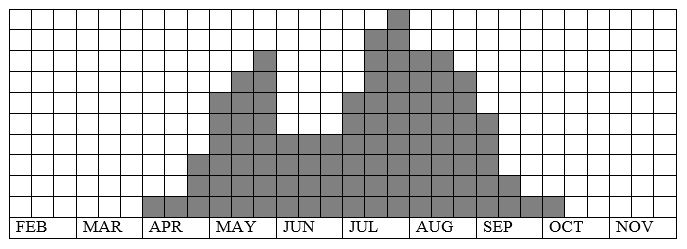
Fig. 28-2. Pieris napi, habitat characteristics.
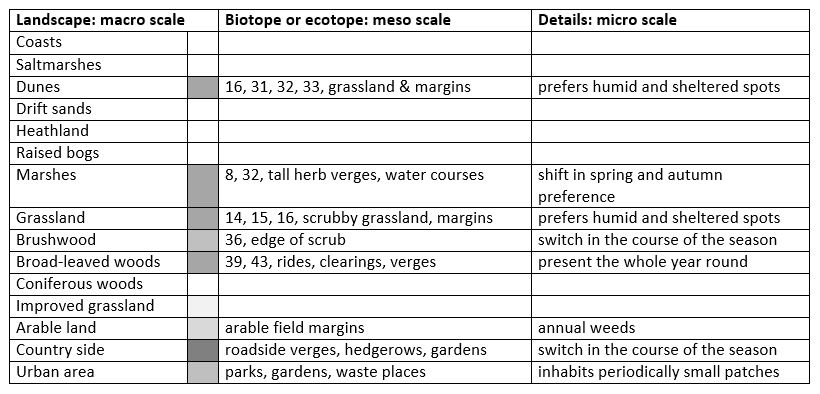
Fig. 28-3. Pieris napi, climate matrix, heat-sums 300 - 2000°d.
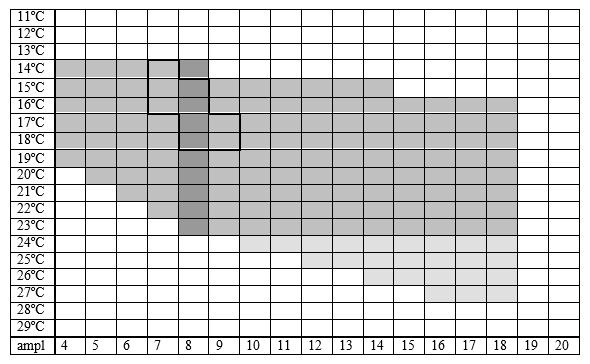
|











